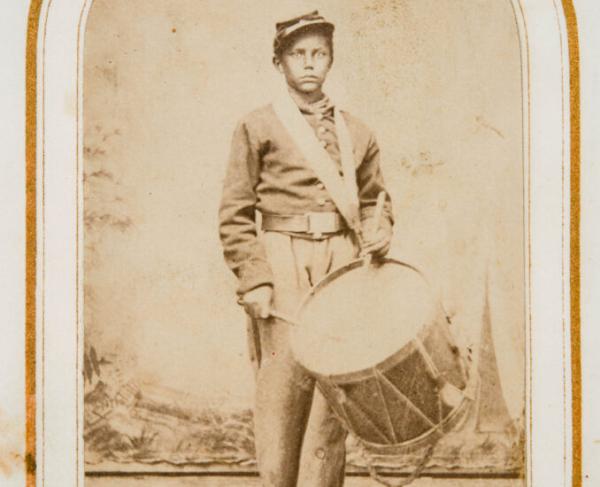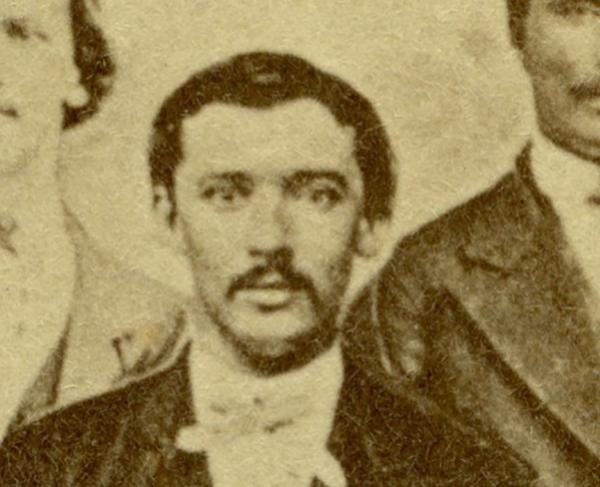Henry Wadsworth Longfellow
An American poet and writer, Henry Wadsworth Longfellow’s verses shaped perceptions of American history and inspired the generation of Civil War soldiers. He ranked among the American authors who were internationally recognized in the early and mid-19th Century.
Born on February 27, 1807, Henry Wadsworth Longfellow was the second son of Stephen and Zilpah Longfellow. His father was a lawyer and legislator in the territory and later state of Maine. Longfellow traced his family history in North America to 1651 on his father’s side while on his mother’s side, he was related to John Alden and Priscilla Mullins who came to Massachusetts on the Mayflower in 1620. Other ancestors fought in the American Revolution, and Longfellow grew up hearing stories of his family’s lineage.
For most of his childhood, Longfellow lived in Portland, Maine. He attended public and private schools. When he was 13, he published his first piece of poetry. At age 14, he passed the entrance exam for Bowdoin College. There, a professor took interest in Longfellow’s writing and encouraged him to study foreign languages. Family tension rose when he wanted to pursue a literary career, while his father worried that unless Longfellow became a lawyer, doctor or minister he could not make a suitable living. He graduated fourth in his class and was invited to give a commencement address.
Longfellow had literary aspirations and a dream of making American literature notable. He received an offer for a professorship at Bowdoin College but with the condition that he had to study languages in Europe at his own expense for two years before accepting the job. Eagerly, Longfellow embarked on his first European tour of study in May 1826, visiting France, Spain, Italy and Germany over the next years.
At age 22, Longfellow became the head of the new Department of Modern Languages at Bowdoin College. During his tenure, he taught French, Spanish, German and Italian—often translating the grammar texts and other books he wanted to use in class. Even while teaching classic and European languages, Longfellow encouraged American literary achievements, insisting that American writers should not seek to copy European writers. He eventually tired of college politics and the teaching schedule which left him little time to write.
On September 14, 1831, Longfellow married Mary Storer Potter, a judge’s daughter. Shortly after his first major work Outre-Mer: A Pilgrimage Beyond the Sea was published and well received. In December 1834, Longfellow was invited to take over a retiring friend’s chair as Professor of Modern Languages at Harvard; the offer included the option to spend a few years in Europe while the retiring professor taught a few final semesters. Longfellow and his wife sailed for Europe in April 1835 and toured and studied in England, Sweden, Denmark, The Netherlands and Germany. Tragically, Mary Longfellow suffered a miscarriage and died of prolonged complications on November 29, 1835. Henry Longfellow mourned his wife’s death, arranged for her remains to be taken back to Boston for burial, and sorrowfully continued his trip to Austria, Switzerland and Italy.
Returning to Boston in December 1836, Longfellow started teaching at Harvard and his classes were popular. He became friends with other authors, professors and lecturers, including Charles Sumner who influenced his passion for the abolition of slavery in the United States. By 1837, Longfellow was courting a young woman, Frances “Fanny” Appleton, but she abruptly rejected him, throwing the poet into despair. Though his personal life was gloomy at this time, Longfellow’s teaching writing career began to soar. He published the novel Hyperion and a poetry book, Voices of the Night, in 1839; both sold well. Longfellow published a second book of poetry in 1841 and the following year returned to Europe, studying in Germany and then staying with popular author Charles Dickens in England.
After he returned to America, Fanny Appleton and Longfellow rekindled their friendship, then courtship, and married on July 13, 1843. She helped to inspire some of his poetry and suggested literary themes; for several years after their marriage, Longfellow struggled with eye strain and near blindness, and his wife wrote down his words and helped with translating during that time. They had six children, and the Longfellows were known for their large, happy family and busy household.
In the late 1840s, Henry Longfellow published his first long poetry ballad, Evangeline: A Tale of Acadie, which sold out multiple printings. He penned another novel, and one of his poems—The Building of a Ship—gained particular notice for its verse commentary on the United States and slavery’s threats to national unity. The beginning of the 1850s found Longfellow busy and struggling to write; when he retired from teaching, he started writing again. Hiawatha—a lengthy poem inspired by Native American lore—published in 1855, followed by The Courtship of Miles Standish and Other Poems in 1858. Though his father had once worried about Longfellow’s financial future, Henry Wadsworth Longfellow’s books flew off the shelves and earned him a small fortune, allowing him to care for his family without worry.
In April 1860, Henry Longfellow and Charles Sumner climbed the church tower of the Old North Church, and the visit inspired the poet to write Paul Revere’s Ride which drew inspiration from the American Revolution for the crisis facing the nation in his own era. Longfellow supported Abraham Lincoln’s election and continued to advocate for the end of slavery while the Civil War divided the nation. Personal tragedy struck in July 1861 when an accident resulted in a fire and Fanny Longfellow died of burns and injuries. Longfellow was crushed by the loss of his second wife but tried to carry on and look after their children. In March 1863, Longfellow’s oldest son, Charles, ran away from home and enlisted in a Massachusetts cavalry regiment; by the end of the year, he had been badly wounded and sent home—adding to the stress and grief of the family.
The years following the Civil War, Longfellow worked with Charles Sumner to introduce a bill to the U.S. Senate that would establish and protect international copyright law. Though the measures would not be passed until after Longfellow’s death, it was an important step for safeguarding authors’ works. Longfellow sailed for Europe again in 1868, taking his children on a 15-month tour. He was honored with honorary degrees from Cambridge and Oxford and Queen Victoria of England gave him a reception. Longfellow had been a best-seller American author for years and his work was recognized internationally—helping to build American literature as he had hoped and envisioned in his youth.
Returning to the United States, Longfellow spent his final years close to his home, taking delight in his children and grandchildren. He continued to write and translate until nearly the end of his life. Henry Wadsworth Longfellow died on March 24, 1882, and was buried in Mount Auburn Cemetery. He had been part of the 19th Century authors who shaped American literature, and many of his poems were uniquely American, encapsulating stories and memory of the past and forging American legends in poetic verse.


